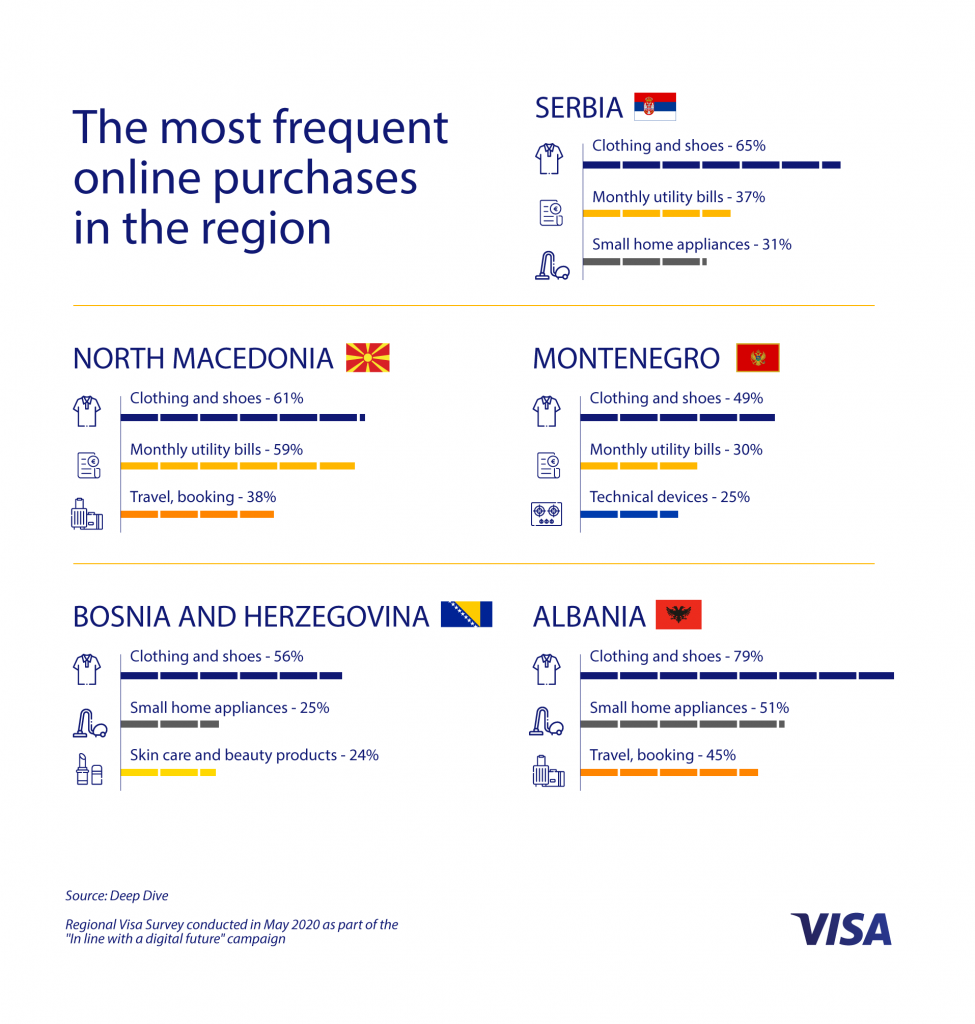About 70% of cardholders in Serbia purchase goods and services via the Internet, where about 44 percent of consumers shop online a couple of times a month, 45 percent do it a couple of times a year, while seven percent shop online several times a week, according to a regional survey recently conducted by Visa as part of the “In line with digital future” campaign.
According to the survey, the main reasons for online shopping customers point out are: time saving, security, speed, money saving and convenience, a wide selection of goods, and the fact that in a short time they can find and compare various offers.
More than two thirds stated that free delivery would encourage them to buy more online in the future, and more than 60 percent of respondents state the lower prices as an advantage.

Discounts when shopping online are also a motivation for consumers, just like free shipping. Some products are only available online, while at the same time online procurement offers a wider choice of products and services. Domestic or foreign sites that connect consumers and sellers are convenient, as well as the convenience of buying from your own home or other location of your choice.
Clothes and footwear are the items that are mostly bought online (65 percent), about a third of respondents purchase technical devices and beauty care products in this way, 37 percent of them pay utility bills online, while 31 percent buy small household appliances, cosmetics and beauty care products.
Groceries from retailers’ online stores, video games, software and hardware, car tires, travel and accommodation reservation are the categories where online shopping could improve in the future. All items do not exceed 17 percent when asked if they procured mentioned goods and services in the previous six months.
About 76 percent of respondents most often use a smart phone for online shopping, while 45 percent of them use a laptop, and 32 percent use computer.
On the other hand, almost every third citizen who relies on traditional ways of shopping states that he or she does not have the habit of paying online, as well as that this form of shopping prevents them from trying on clothes and shoes (about 30 percent).
About 78 percent of respondents still consider cash on delivery (cash or card) as one of the better solutions, however, almost half emphasize that lower prices would motivate them to buy online in the future. Furthermore, they point out that they would be more interested in this type of purchase if they were more confident in the quality of the product that is delivered to them, and if the process of purchasing the product itself is simpler.
”During quarantine, significant number of consumers has gotten familiar with eCommerce, since online shopping appeared to be the only safe way to acquire goods. COVID-19 accelerated a global shift to digital and shoppers from Serbia are following the trend and switching to a digital-first mindset expecting to find, purchase and receive goods in a quick and secure way. In response to these shifts, Visa introduced ‘Visa Secure’ – a new standard for frictionless payments and improved online experience. Visa Secure uses the latest EMV 3-D Secure (3DS) standard, a globally accepted authentication solution designed to make eCommerce transactions more secure in real-time. By using these new digital standards for online payments, Visa is here to make online shopping experience as simple and accessible as shopping in your favorite local business” said Vladimir Djordjevic, General Manager of Visa for South-Eastern Europe.
When it comes to the countries of the region, the best results in terms of e-commerce are recorded in North Macedonia, where as many as 90 percent of respondents buy online. In Bosnia and Herzegovina and Albania, the interest in web stores grows, as almost 60 percent of respondents opted for this form of procurement, while in Montenegro it is every other citizen.
Visa is committed to supporting pandemic-affected economies and wants to use its expertise, data analysis and products to get them back on their feet as soon as possible. In the upcoming period, the world leader in digital payments will present the results of the entire regional survey, in order to introduce the public with the novelties in consumer habits and in that way help governments and companies in making important decisions. The survey was conducted in May, on a sample of 500 card users in countries in the region, aged 18 to 55.